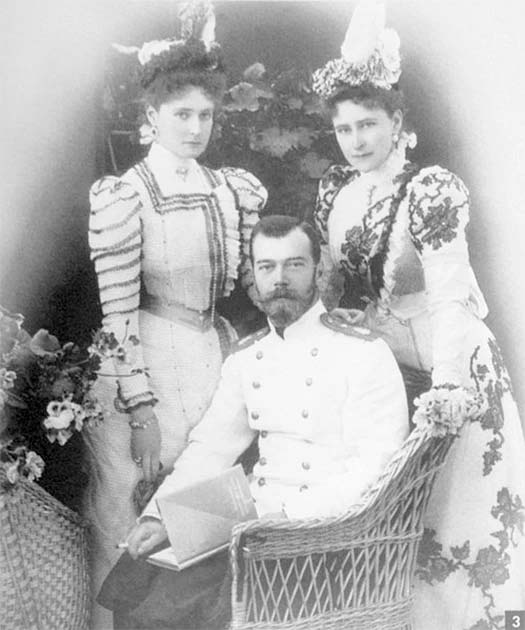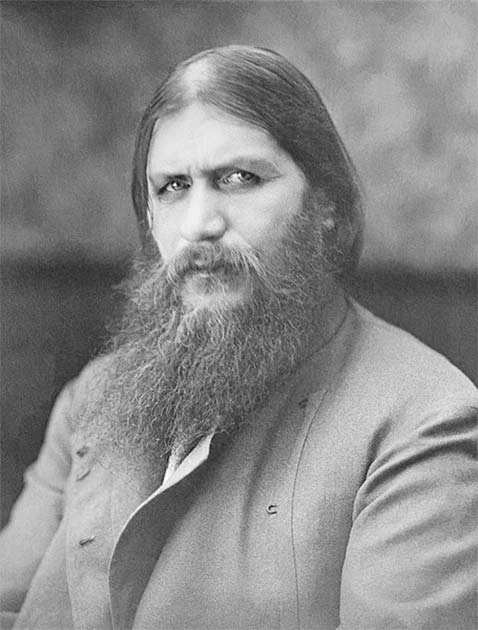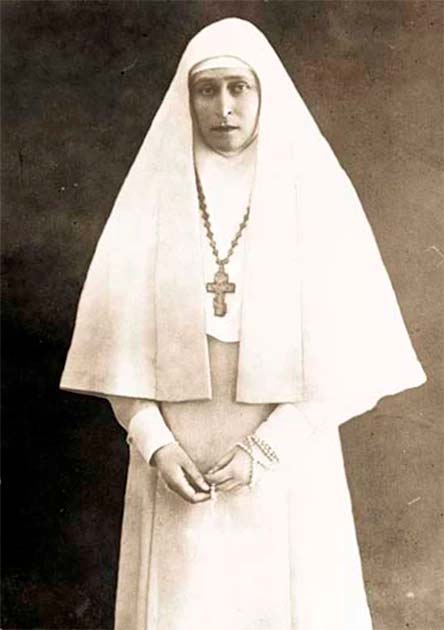From inside the dark mineshaft, there was only silence. Then, out of the darkness, a lone woman’s voice was joined by others in singing an Orthodox hymn.
Among those singing was Grand Duchess Elizabeth Feodorovna. She tended to the injured Prince Ioann Konstantinovich in the darkness, bandaging his head wound.
It was here that the 53-year-old royal would meet her untimely death. Today, there is much debate as to how Elizabeth Feodorovna met her end, however, one clear thing is that they were victims of the Russian Revolution: on July 18, 1918, Elizabeth and five other Romanovs were executed by the Bolsheviks.
Who was Elizabeth Feodorovna?
Princess Elizabeth of Hesse and by Rhine was born on the 1st of November 1864, to the German Grand Duke, Ludwig IV, and Princess Alice, daughter of Queen Victoria. Despite the prestigious pedigree, Elizabeth’s childhood was far from luxurious.
Princess Alice did things her own way, she didn’t follow royal protocol. Elizabeth and her siblings learned to do housework and even swept the floors, they learned to take care of themselves. Alice even took her children to the hospitals, where they nursed the sick and injured. This habit would profoundly impact Elizabeth, as she would continue to help those in need.
Those idyllic days were not to last, when Elizabeth turned 14, diphtheria (an infection that causes suffocation and heart failure) took the lives of Princess Alice and her 4-year-old sister Marie. Trying to overcome the loss, Elizabeth focused on her education and strove to improve herself.

She was a reputed beauty, and many eligible bachelors sought her hand for marriage. Among them was Sergei Alexandrovich. Sergei was the son of the Russian Tsar Alexander II and Empress Maria Alexandrovna (she was also the great-aunt of Elizabeth). Therefore, the two may have known each other since they were children.
Elizabeth wasn’t at all impressed by Sergei, thinking him to be arrogant and somewhat stuffy, thus she rejected his proposal. However, when Sergei lost his mother, Maria in June 1880, and shortly after his father, Tsar Alexander II, Elizabeth felt sympathy for the prince.
She had known the loss of a parent, and it was through their shared pain that they slowly fell in love with each other. Thus, when Sergei proposed for the second time, Elizabeth finally accepted.
Married Life
In June 1884, the young couple were married, but her grandmother Queen Victoria was not at all pleased by the match. At the time, royal marriages were still political, and Queen Victoria didn’t like that Elizabeth was marrying outside her faith to a Russian Orthodox prince. But despite all opposition, the marriage went forward.
- Tsar Nicholas II: Could the Romanovs have saved Imperial Russia?
- Tsarevich Dmitry: The Prince Who Would Not Die
On the day, she was described by Vladimir Fedorovich Dzhunkovsky in his memoirs:
“Grand Duchess Elizabeth Feodorovna was charming, she spoke to everyone with such attention, so captivated with her beauty, grace, with amazing modesty and simplicity, that it was impossible to look at her except with admiration.”
Sergei was very religious and often prayed that his wife would join his faith. Elizabeth Feodorovna had been raised as a Protestant; thus, it shocked her family when in 1891, she decided to convert to Russian Orthodoxy. In a letter to her brother Ernest, she explains why she decided to change her religion:

“I felt how Sergey longed for this moment, and I knew many times that he suffered from it. He was a true angel of kindness. How often could he, by touching my heart, lead me to change my religion in order to make myself happy; and never, never did he complain…Let people shout about me, but just never say a word against my Sergei. Take his side before them and tell them that I adore him and also my new country and that in this way I have learned to love their religion too…”
The Romanov family loved the new Duchess, she was praised by the whole empire for being a religious, kind, and charitable woman. They lived happily together, but unfortunately; the couple didn’t have any children. Later becoming foster parents to Sergei’s niece and nephew. They were married for 21 happy years before tragedy struck.
A Life in Interesting Times
By the start of the 20th century the winds of change were gathering, but the Russian aristocrats were trying desperately to hold on to the old way of life. Sergei wasn’t an exception, he was seen as part of the old tyrannical ruling class.
Thus, on the 17th of February 1905, Elizabeth’s life changed forever when a socialist revolutionary, Ivan Kalyayev, threw a bomb at Sergei’s carriage and killed him. A column of fire and ash went up, and people rushed to the location of the massive explosion.
Elizabeth had been in a warehouse nearby when the bomb exploded, and she immediately knew that it was her husband’s carriage. Rushing out without any proper covering against the cold, out of all the people she was the first to reach the scene. In her despair, she started collecting pieces of her husband and his clothes, while she kept repeating that “Sergei didn’t like a mess”.
After her husband’s death, Elizabeth went to visit her husband’s murderer. One can only imagine what was going through her mind the moment she saw him. However, one thing is clear, she forgave him and asked him to repent for his deeds so that she could beg for his life.
While Ivan Kalyayev was moved by her plea, he told her that he wasn’t interested in her offer and chose death. Three months after this meeting Ivan was hanged.
The Birth of a Saint
Elizabeth saw her husband’s death as a kind of cosmic revenge, because Sergei had been responsible for the expulsion of 200,000 Jews from Russia. Now alone, Elizabeth decided to repent and devote her life to God, she forsook the comforts of royal life and shed the luxurious lifestyle that she had become accustomed to.
She sold her jewelry and the rest of her properties, using the money she collected to build the Convent of Saints Martha and Mary in Moscow. Furthermore, she even constructed a cross on the location where her husband had been assassinated.
Elizabeth moved into the convent and took on the role of the abbess. On the convent grounds she opened a hospital, orphanage, pharmacy, and chapel. Her mission in life was to aid the poor and needy, she even distributed 300 meals to the poorest residents of Moscow. She had found her purpose, and she was trying to make good use of her influence to help as many people as she could.
It was during this time that a rift developed between Elizabeth and her younger sister, Tsarina Alexandra, the reason being Rasputin. Elizabeth saw Rasputin for what he was, a villain and con man, who was corrupting the house of the Tsar.

Her pleas to her sister fell on deaf ears, as the Tsarina was blinded by her devotion. Therefore in 1916, Elizabeth met her sister for the last time at Tsartskoye Selo, where she tried one last time to convince her sister and brother-in-law that they needed to escape the influence of Rasputin. It is also believed that she may have known about the assassination plot to rid the nation of Rasputin and called it “a patriotic act.”
1917 saw an end to imperial power, the Tsar was forced to relinquish control of his empire to the Lenin and his men. The royal family was later imprisoned far from the capital. Although Elizabeth wasn’t an active member of politics nor wielded any power, Lenin ordered her arrest as well.
However, at first, the people were hesitant as they didn’t want to imprison a lady of God, but in 1918, Lenin’s secret police took her into custody. She was imprisoned along with seven members of the royal family in a school in Alpayevsk, a small mining town outside Siberia.
The End is Near
On the 17th of July 1918, the Tsar and his family were executed by the Bolshevik army. Although no evidence survives, it may have been possible that Grand Duchess Elizabeth would have been made aware of her sister’s demise, before her own untimely death. Just a day after Tsarina Alexandra was murdered, Grand Duchess Elizabeth and her seven family members were put to death, their bodies thrown down the shaft at the back of the mine.

Here the exact truth of the story is hazy. According to some sources, they were beaten to death and thrown down the shaft alive but according to modern forensic medical evidence, the bodies reveal that the victims were dead when they were dumped into the mine. It was a death that Elizabeth didn’t deserve but she suffered for her faith and her people, therefore she may have had no regrets.
Elizabeth Feodorovna was the sister of the last Tsarina, the wife of the Governor-General of Russia, an Abbess, and a Saint. Few people accomplish such great acts during their lifetime.
The Grand Duchess, although plagued with misfortune was able to turn that hurt into good. She took control of her life after her husband’s death and left a lasting impact on the lives of the Russian people, who still remember her for her charitable deeds.
Top Image: Grand Duchess Elizabeth Feodorovna. Source: D ASIKRITOV / Public Domain.